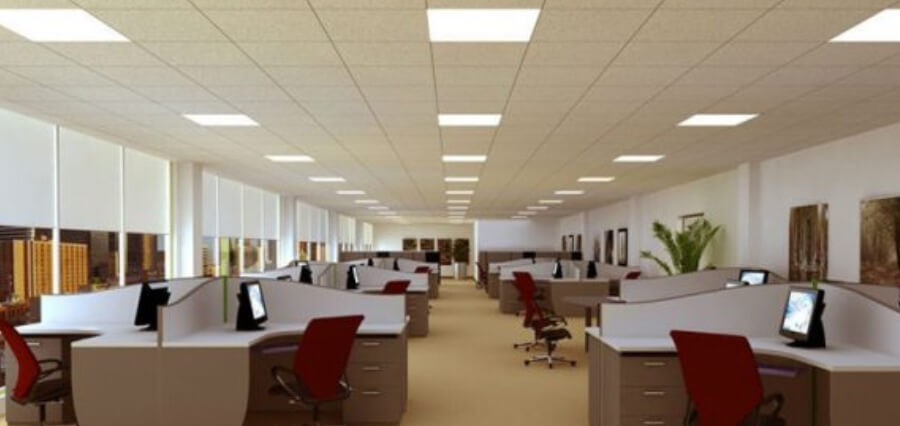In today’s business climate, it’s important to find new and creative ways to keep your eyes on the ball when it comes to using less power at peak-demand hours. You can also visit various online sources such as https://www.drsa.com/collections/led-spreader-lights to get LED lights which have proven to be affordable and worth their weight in gold for businesses that utilize them because they use considerably less electricity than HID alternatives. Find out why LED lighting is a trend you shouldn’t overlook with this article.
Lights Helping Businesses Succeed
Businesses have been upgrading their lighting for years to improve their overall appearance. Whether it’s changing the light fixtures in the lobby, increasing the brightness of the office lighting, or installing more energy-efficient LED lights, businesses realize the benefits of upgrading their LED lights in NSW.
LED lights come in wide varieties, and each has its own advantages and disadvantages. Here are just a few reasons you might want to consider upgrading to LED lights:
-LED lights to use less energy than traditional light bulbs, which can save businesses money on their electricity bills.
-LED lights last longer than traditional light bulbs, so they’re less likely to need to be replaced frequently.
– LED lights often produce a more vivid and natural-looking light than traditional light bulbs. This can help businesses improve their brand image and attract new customers.
Renewable Energy Options
Numerous energy sources exist to power our lives, including renewable energy options. LEDs are an excellent option for both indoor and outdoor lighting, as they last a long time and use less energy than other types of lighting. Here are four reasons to consider upgrading to LEDs:
- They Use Less Energy Than Other Types of Lighting: LEDs use about one-seventh the amount of energy as halogen or incandescent bulbs and last up to 100 times longer. This means that you can save money on your electricity bill and reduce your carbon footprint.
- They Last Longer: LEDs emit little heat, so they’re ideal for places where temperature control is important, such as restaurants and retail stores. They also have a lifespan of over 50,000 hours, which is more than three times the lifespan of traditional lightbulbs.
- They’re Environmentally Friendly: LEDs generate little to no waste and can be recycled multiple times. Not only do they contribute to reducing global warming, but LEDs also require less maintenance than other types of lights.
- They’re Stylish And Versatile: LED technology has evolved in recent years to create more versatile lights that can be used in a variety of settings.
Finding The ‘Perfect Light’
As the world becomes more and more electrified, people are beginning to ask themselves whether or not LED lighting is a good idea for their homes. With so many pros to consider, it can be hard to determine if upgrading is the right move for you – so here are some things to think about.
The First Thing To Consider: Efficiency
LEDs typically use 80-90% less energy than traditional light bulbs, meaning they will help you save money on your electricity bill. Not only that, but they also create less heat, which can improve the air quality in your home.
The Second Thing to Consider: The Environment
LEDs aren’t made with pollution in mind – they’re designed to produce a warm, soft light that’s perfect for indoor use. So, not only do LEDs save you money on your electricity bill, but they also help save the environment by eliminating unnecessary waste.
Lighting Turns Static Electricity Into A Passing Current
Static electricity is an electrostatic discharge that occurs when two objects that are charged come into contact. This happens when a person rubs their clothing against a piece of furniture and then touches another person, or when two pieces of metal are close together. The electrons in each object are separated and can build up until they create an electric spark.
Static electricity is something that most of us are familiar with. It’s the annoying feeling we get before an electric shock when we touch something metal, like a doorknob. Static electricity is created when two pieces of metal are separated by a conductor, like air. Smaller pieces of metal (like dust) can cause a lot of static electricity because they create more tiny sparks.
Static electricity can be a problem in homes, offices, and other places where there are lots of wires and metal objects. It can create sparks that can start fires. And it can also cause damage to electronic equipment, including computers and electrical wiring.
Many people replace their lamps and other light fixtures to solve the static electricity problem with LEDs (light-emitting diodes). LEDs produce very little static electricity. And they don’t produce any light if they’re not turned on.
LEDs are great for areas where you want to reduce or eliminate static electricity problems. They’re perfect for areas where there’s a lot of electronic equipment, like computer labs and office cubicles. They’re also great for light displays in malls and other public places.


